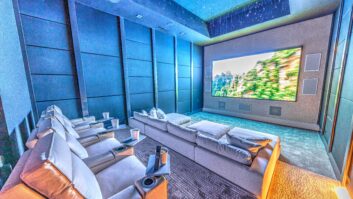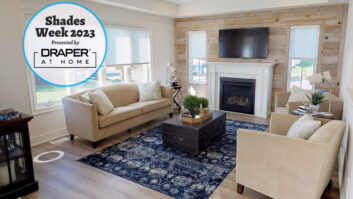Complex, Whole-House Matrix Switchers May Finally Be a Thing of the Past

Gordon van Zuiden ([email protected]) is president of cyberManor in Los Gatos, California.
Since the 2009 Consumer Electronics Show, I have been reading technology columns and seeing booth demonstrations of CableCARD HDTV tuner farms from Ceton and Silicon Dust. This promised to be the killer product that would turn Media Center-based solutions into the best whole-house personal video recorder on the market.
On a single centralized Media Center server, one could house four to eight HDTV tuners and stream them to Windows 7 Media Center clients around the home. With a Media Center server housing CableCARD HDTV tuners, you could easily store terabytes of HD recorded shows and freely distribute them to HDTVs across a standard gigabit switch. The need for a rack full of CableCARD set-top boxes controlled by a complex, whole-house matrix switcher would be a design and installation of the past.
But 2009 and 2010 went by without a solution that we could implement for our clients. Niveus Media had a two CableCARD HDTV tuner solution for a while, but that was discontinued last year when the company stopped producing hardware products. S1 Digital had a four-ATI CableCARD HDTV tuner based server solution last year, but when ATI stopped making its USB CableCARD HDTV tuners, that solution went away as well. So hopes for a true HDTV tuner farm have ebbed and flowed for more than two years now.

With the Media Center platform and the Ceton InfiniTV 4, you have the ultimate HDTV and DVD/Blu-ray movie storage and serving solution to offer.
But as of this May, the wait appeared to finally be over. In my own home I have installed a 7.5-terabyte Media Center server from Epicenter with the Ceton InfiniTV 4 PCI Express tuner card and Ceton’s newly released network tuner sharing firmware. I have reliably and repeatedly streamed live and recorded HDTV content across my gigabit network to the HP TouchSmart Media Center in the kitchen, the Epicenter Mini-Player Media Center connected to a Samsung 55-inch LED TV in the master bedroom, and the Windows 7 Media Center in the office. With the fourth available tuner, I plan to stream content across my wireless N network to the newly released Epicenter Tablet that runs Windows 7 Media Center. I saw the performance of this solution at my home and was amazed by the clarity and resolution of the HDTV streams. Attaching this 10-inch tablet to a swing arm mount can give clients that want a thin TV in their kitchen or master bath (for example) a solution that gives them access to HDTV without the need for a separate cable box. And it gives them access to not only live HDTV, but also any of the recorded HD content on the home’s central Media Center server. No other whole-house DVR solution on the market today from the satellite providers, phone providers, or CableCARD TiVos can provide as extensive, scalable, and flexible whole-house PVR solution.
But this story gets even better. With additional software, Media Center servers have the ability to rip, store, and catalog DVD/Blu-ray movies for storing and serving around the home. Netflix and Amazon have movie download services that can also stream movies to smart TVs, but movies are always released on DVD/Blu-ray before Netflix and Amazon. With the Media Center platform and the Ceton InfiniTV 4, you have the ultimate HDTV and DVD/Blu-ray movie storage and serving solution to offer the following:
■ One common graphical interface to navigate HDTV and DVD/ Blu-ray movies
■ The capacity to stream live and recorded HDTV and DVD/Bluray movies to up to 10 Media Center clients simultaneously
■ The ability to record and view HDTV shows from any Media Center platform.
And probably the most important feature of all–it really works! After a month of testing in my home (Ceton has been successfully beta-testing network tuner sharing for the past seven months) I have found that when the network and switch are properly designed, and the Media Center servers and clients have the proper horsepower, memory, and are clean of all OEM “bloatware,” you have a robust and reliable movie distribution solution.
The main limitation of the Ceton tuner cards is that they must be installed in a Media Center server with open PCI Express slots. Generally, that is not an issue, because you will still need a Media Center server to store and catalog TV and movie content–and these servers often have open PCI Express slots–but an even more flexible solution would be to have the HDTV tuner farm box directly attached to the network. That solution now appears imminent after Silicon Dust’s announcement of an end-of-July shipping date for the three- and six-CableCARD HDTV tuner HDHomeRun Prime products. We will anxiously await the release of these products to see if they perform well. If they do, it would be logical for us to use these products as a tuner farm box in the distribution panel of each of our cable TV clients’ homes.
While the cloud may contain our clients’ data, photos, videos, and some of the TV and movies they may want to watch, it doesn’t contain HDTV tuners, which must be located within our clients’ homes. Now, for the first time, we can create “tuner clouds” inside our customers’ homes, as well.







